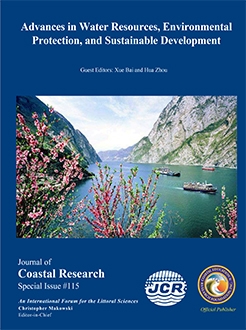Shih, Y.C., 2020. Metal contaminants tracer for modeling marine culture environmental quality-A Taiwanese case study. In: Bai, X. and Zhou, H. (eds.), Advances in Water Resources, Environmental Protection, and Sustainable Development. Journal of Coastal Research, Special Issue No. 115, pp. 648-654. Coconut Creek (Florida), ISSN 0749-0208.
The study was undertaken to assess the marine environmental effects from feed and waste associated with marine culture activities in Taiwan. In the meanwhile, the work was undertaken to develop an approach for modelling the changes of sediment chemistry related to the accumulation of marine culture waste. Metal composition of sediment Cu, Zn, Mn, Al, Li (ug/g) and Fe (%) were used to determine the extent of detectable effects around the cage. The concentrations of Al decreased with increased accumulation of Cu at study sites. There is a trend among normalised metals related to normal, hypoxic and anoxic sediment conditions. The trends are useful for detecting and assessing the cumulative effects from aquaculture wastes to the marine environment. Principal components analysis (PCA) was carried out on the metals and to cluster the similarities of the variables to establish for assessing the environmental conditions.





